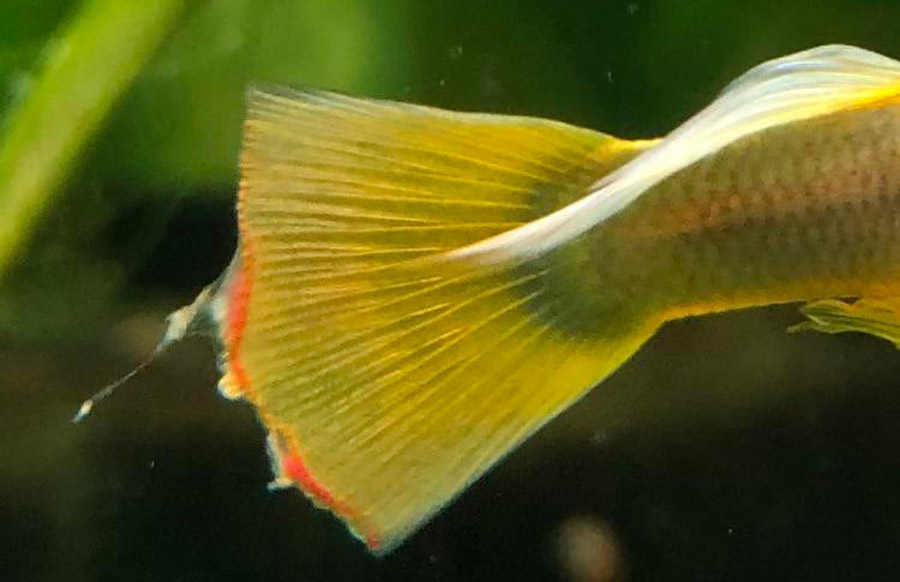- Your cart is empty
- Continue Shopping
Fin rot Disease prevention and Treatments – 2022

Fish fin rot disease
Fish fin rot is a common and potentially serious bacterial infection that affects the fins and tails of fish. It is caused by a variety of bacteria, but the most common culprit is Aeromonas hydrophila.
Symptoms of fin rot include frayed or ragged fins, redness or inflammation around the infected area, and white or clear patches on the fins. In severe cases, the infected area may turn black or necrotic and the fins may become completely degraded.
Fin rot is often caused by poor water quality, overcrowding, or physical injuries to the fins. It can also occur as a secondary infection in fish that are already sick or stressed.
Treatment for fin rot typically involves a combination of improving water quality and administering antibiotics. It is important to carefully follow the instructions for administering antibiotics, as improper use can lead to antibiotic resistance in the affected fish and other aquatic animals.
Preventing fin rot involves maintaining good water quality, avoiding overcrowding, and properly caring for fish. This includes regularly checking and maintaining the pH, temperature, and other water parameters, as well as providing a healthy diet and suitable living conditions.
If left untreated, fin rot can be fatal to fish. It is important to take prompt action if you suspect that your fish may be infected with fin rot.

In addition to the steps mentioned above, there are a few other things that you can do to help prevent and treat fin rot in your fish:
- Quarantine infected fish: To prevent the spread of fin rot to other fish, it is important to isolate infected fish in a separate tank or quarantine area. This will allow you to treat them more effectively and prevent the infection from spreading.
- Use a high-quality water conditioner: Water conditioners can help to remove chlorine and other contaminants from tap water, which can be harmful to fish. They can also help to neutralize any toxins or pollutants that may be present in the water.
- Keep the tank clean: Regularly cleaning the tank and changing the water can help to prevent the buildup of harmful bacteria and other pollutants that can cause fin rot.
- Keep an eye on water parameters: Monitoring the pH, temperature, and other water parameters can help you to ensure that your fish are living in optimal conditions. This can help to prevent stress and other health problems that may lead to fin rot.
- Use a quarantine tank for new fish: Before introducing new fish to your tank, it is a good idea to quarantine them in a separate tank for a few weeks. This will allow you to observe them for any signs of illness and prevent the spread of any potential infections to your existing fish.
Remember, it is important to take prompt action if you suspect that your fish may have fin rot. By following these steps and seeking professional help if necessary, you can help to prevent and treat this common and potentially serious bacterial infection.
- Use a hospital tank: If you have a large number of infected fish, or if the infected fish are in a community tank, it may be more practical to treat them in a separate hospital tank. This will allow you to monitor and treat the fish and prevent the spread of the infection to other fish.
- Use a combination of treatments: In addition to administering antibiotics, you may also want to try using other treatments, such as antimicrobial baths or medicated food, to help treat fin rot.
- Consider using a UV sterilizer: UV sterilizers can help to kill harmful bacteria and other microorganisms in the water, which can help to prevent fin rot and other infections.
- Avoid overfeeding: Overfeeding can lead to a buildup of uneaten food and waste in the tank, which can contribute to poor water quality and increase the risk of fin rot. Be sure to follow the recommended feeding guidelines for your fish to help prevent this problem.
- Monitor your fish regularly: Regularly checking your fish for signs of an illness can help you to catch problems early on, before they become more serious. Be sure to keep an eye out for any changes in behavior, appetite, or appearance that may indicate a health problem, such as fin rot.
By following these tips and seeking professional help if necessary, you can help to prevent and treat fin rot in your fish and keep them happy and healthy.

